Sara
The unfortunate thing about it is that you get sidetracked.
I look around the workshop and see something that looks like it would clean up nicely then, suddenly, there are lots of similar parts that are shouting 'clean me!'. You end up playing ultrasonic cleaning rather than getting on putting things together.... :-)
G
1961 CB72 Project
A little bit more progress. As I was about to put the oil pump back together I noticed this nasty step in the outlet port. These pumps need all the help they can get and any sharp edge or corner disrupts the flow and can cause cavitation.
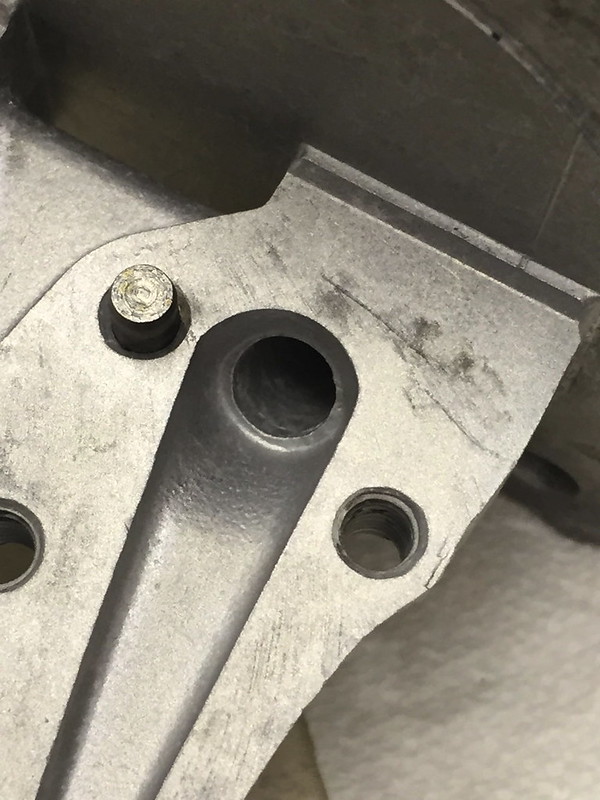
With that done I was able to put a pair of fresh gears in the pump. I was pleased at the close fit. I dressed the gear face a little bit on 1200 grit wet-or-dry just to take any sharp edges off.
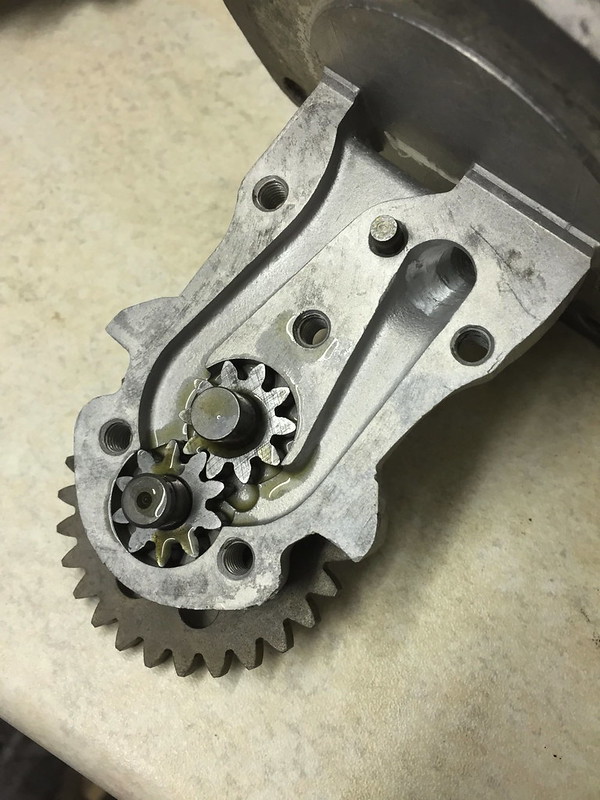
A new gasket went in, smeared with silicone grease to help it seat.
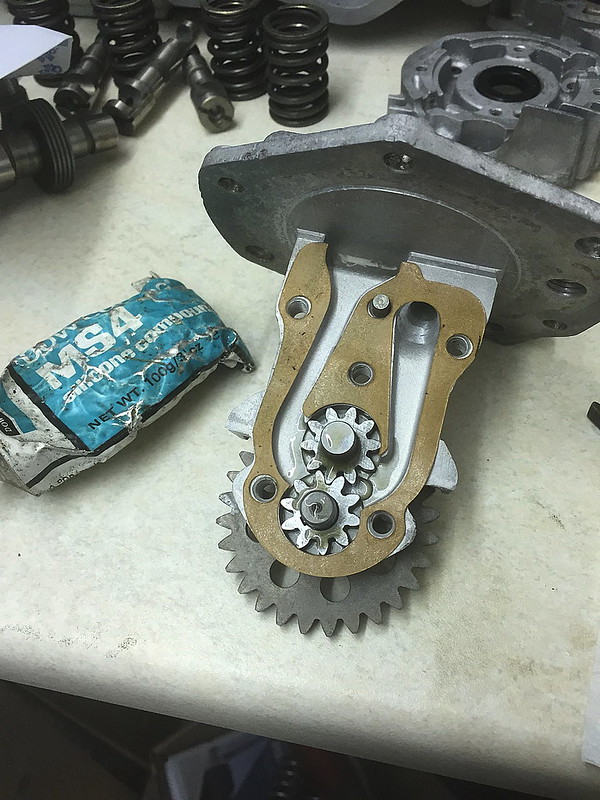
And then it was just a case of putting the cover back on. Because the gears felt quite tight I was careful tightening the screws but when the cover was tight everything worked smoothly.
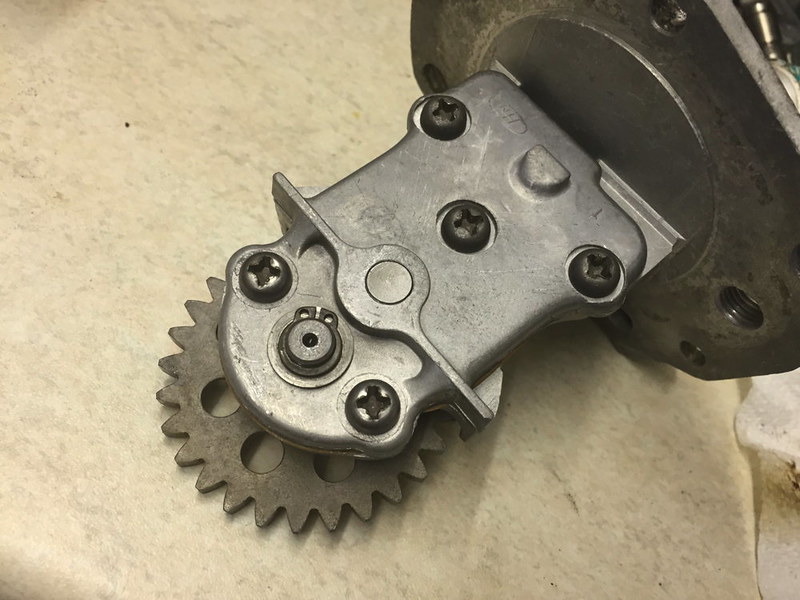
Next job was to sort out a couple of speedos from five units that Alan Curtis and I had collected. 1961 speedos are different from later ones and are held in by a spring attached to a lug on the bottom of the case rather than the two screws in the headlamp that holds later ones.
The five speedos were all a little battered but it looked like we might be lucky. This is the one that came with my bike. There is no makers name on the speedo and no indicator light at the top of the face.
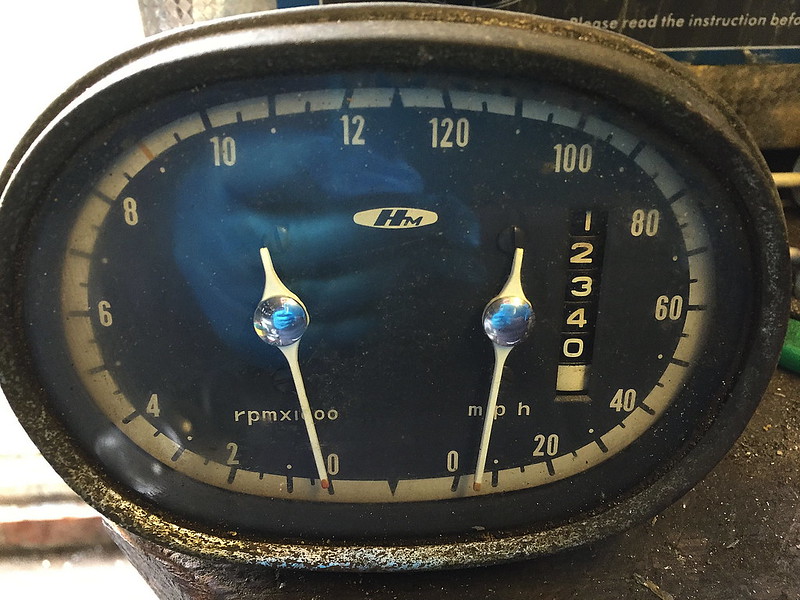
Here is the little retaining lug for the speedo and notice the different hole patterns in these two... Nothing is simple on these early bikes.
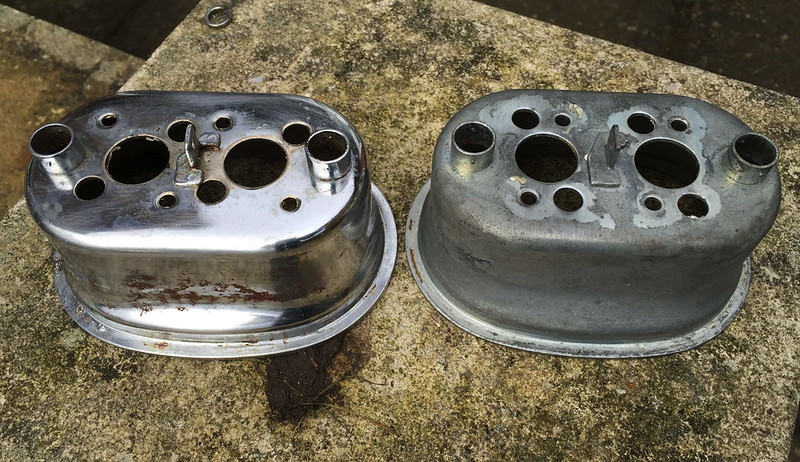
This is the dial from one of Alan's speedos. The numbers are peeling off the odometer dials. Not a good sign.
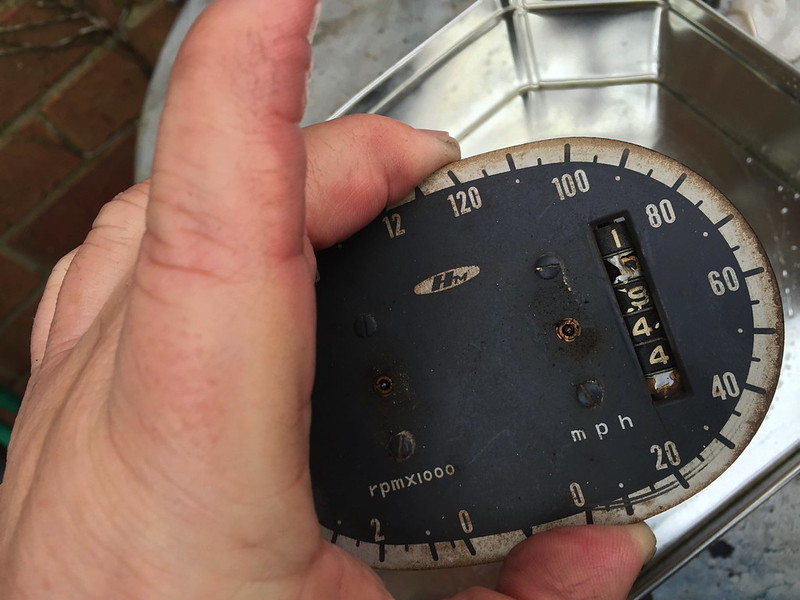
The inside of the speedo off my bike was much nicer. Look at that beautiful mechanism, which looks so much better made than the later ones. Although there is no makers name on either of the two types, I think that this is by Yazaki Meter, judging by some of the Dream speedos I have.
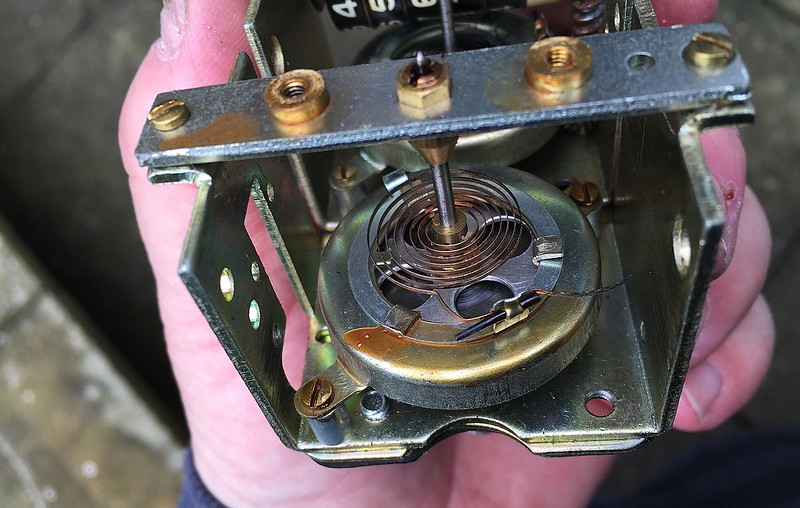
Even the odometer on mine looks better. The odometer dials are larger than later ones so no chance of finding a replacement for the faded 1/10ths dial...
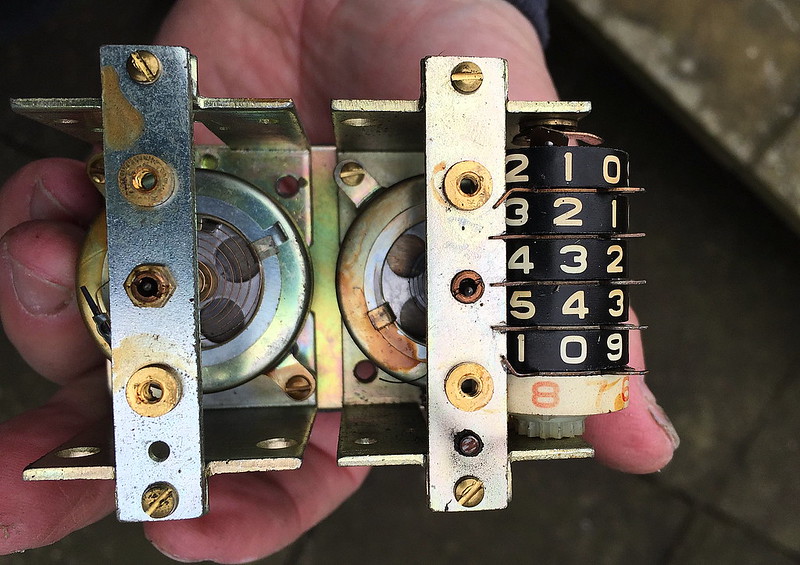
Only two dials were acceptable out of the five we started with. I may be able to touch those up later but we have two nice ones.
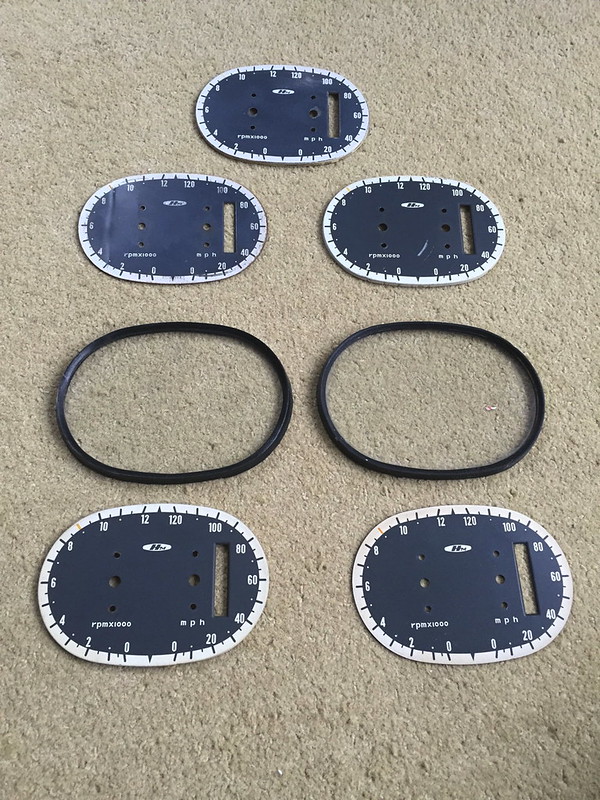
Here's a dry run of Alan's speedo with everything inside cleaned up and re-lubed with the odometer re-set. The insides of this speedo are a simpler type than the Yazaki but still rather nicer made than the later models. Its probably a Nippon Seiki before the accountants took hold for the later CB72s. The Yazaki Meter versions were just too nicely made (and too expensive) to make it in to the mainstream bikes for the rest of the '60s.

A nice therapeutic day at the office...... :-)
G

With that done I was able to put a pair of fresh gears in the pump. I was pleased at the close fit. I dressed the gear face a little bit on 1200 grit wet-or-dry just to take any sharp edges off.

A new gasket went in, smeared with silicone grease to help it seat.

And then it was just a case of putting the cover back on. Because the gears felt quite tight I was careful tightening the screws but when the cover was tight everything worked smoothly.

Next job was to sort out a couple of speedos from five units that Alan Curtis and I had collected. 1961 speedos are different from later ones and are held in by a spring attached to a lug on the bottom of the case rather than the two screws in the headlamp that holds later ones.
The five speedos were all a little battered but it looked like we might be lucky. This is the one that came with my bike. There is no makers name on the speedo and no indicator light at the top of the face.

Here is the little retaining lug for the speedo and notice the different hole patterns in these two... Nothing is simple on these early bikes.

This is the dial from one of Alan's speedos. The numbers are peeling off the odometer dials. Not a good sign.

The inside of the speedo off my bike was much nicer. Look at that beautiful mechanism, which looks so much better made than the later ones. Although there is no makers name on either of the two types, I think that this is by Yazaki Meter, judging by some of the Dream speedos I have.

Even the odometer on mine looks better. The odometer dials are larger than later ones so no chance of finding a replacement for the faded 1/10ths dial...

Only two dials were acceptable out of the five we started with. I may be able to touch those up later but we have two nice ones.

Here's a dry run of Alan's speedo with everything inside cleaned up and re-lubed with the odometer re-set. The insides of this speedo are a simpler type than the Yazaki but still rather nicer made than the later models. Its probably a Nippon Seiki before the accountants took hold for the later CB72s. The Yazaki Meter versions were just too nicely made (and too expensive) to make it in to the mainstream bikes for the rest of the '60s.

A nice therapeutic day at the office...... :-)
G
'60 C77 '60 C72 '62 C72 Dream '63 CL72
'61 CB72 '64 CB77 '65 CB160
'66 Matchless 350 '67 CL77
'67 S90 '77 CB400F
'61 CB72 '64 CB77 '65 CB160
'66 Matchless 350 '67 CL77
'67 S90 '77 CB400F
When I spoke to the "crank man" a couple of weeks ago he asked me to strip the outer bearings from my crank(s). I knew that the early CB72s, like the 1960 Dreams had a different way of getting oil to the right hand crank bearing. Later engines feed oil down the front RHS stud via a little channel in the joint face but these have a little channel and hole inside the crankcase mouth
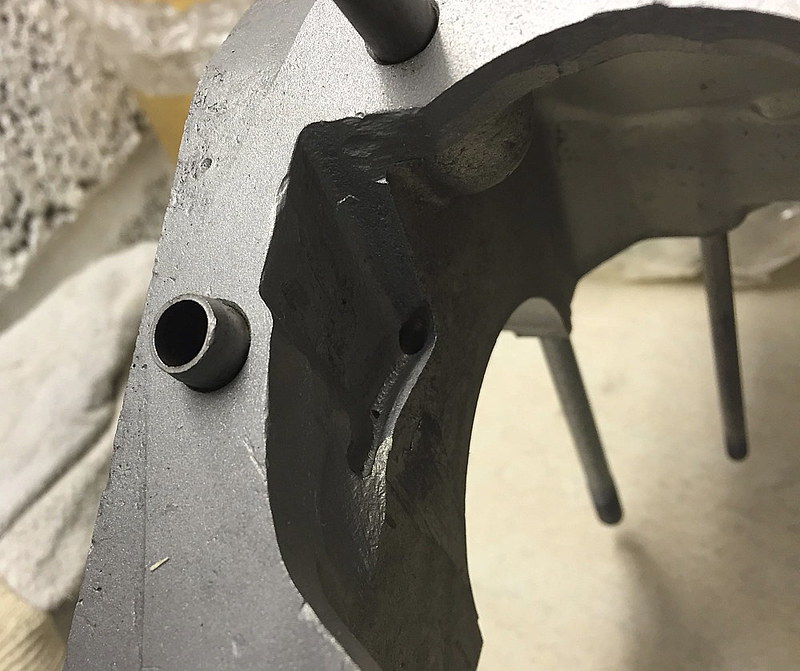
The oilway into the bearing is just next to the knock pin / dowel in the outer race.
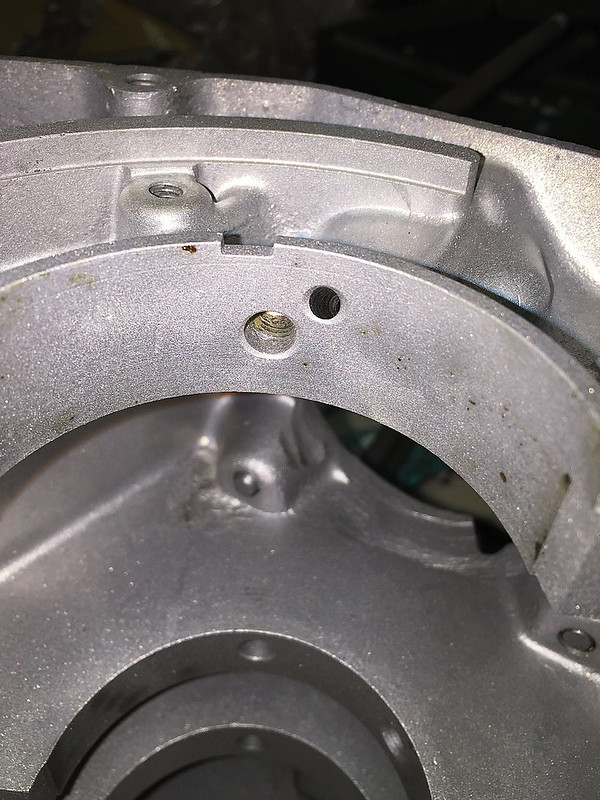
That all sounds sensible but my man told me that early '61 CB72s were fitted with a ball race on that side and that the bearing surface on these early bikes is not hardened. Looking at my crank, it does, indeed, have a ball race. But.... There is no oil feed in that bearing... It just relies on splash feed. You probably wouldn't want an oilway drilled into a ball race anyway but it seems that Honda planned for the later roller bearing and then, temporarily, gave up on the idea.
This is my 'old' crank....
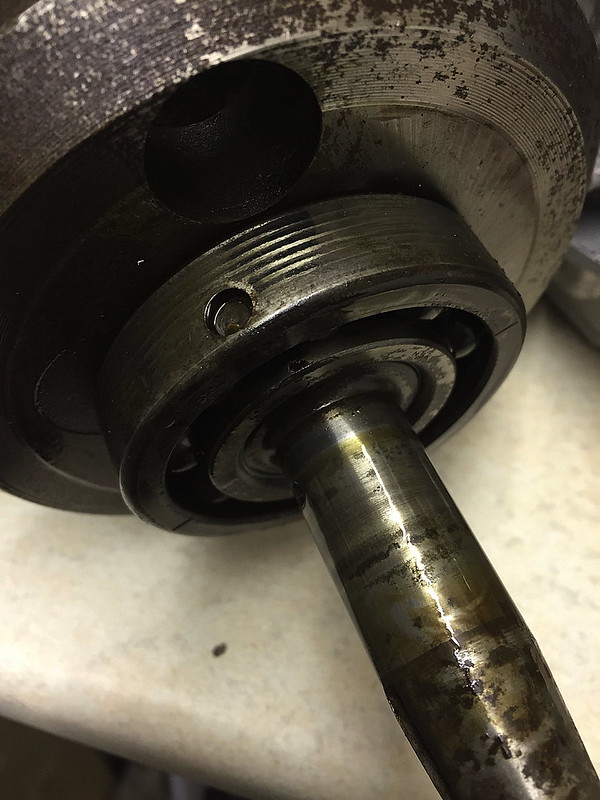
Ande here is a NOS CL72 crank with the ball race fitted...
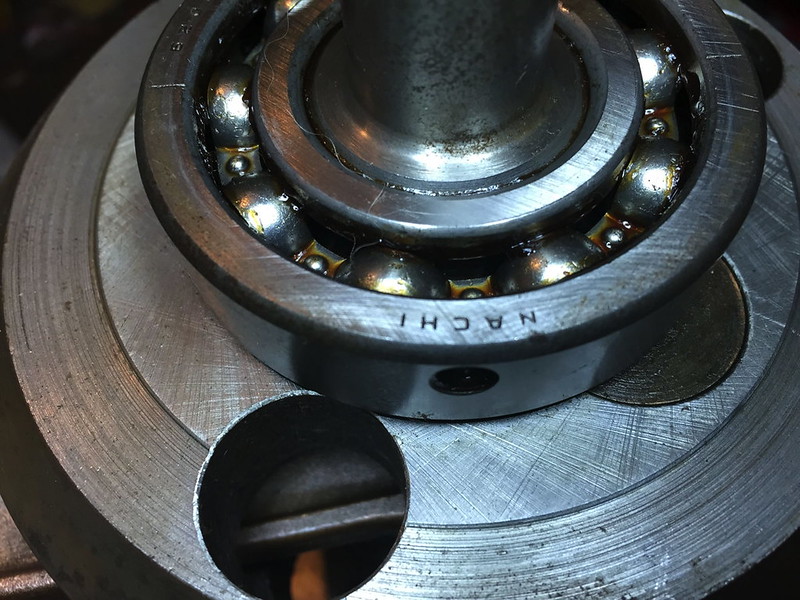
I dug out some bearings and looked at the early parts books and there appear to be two bearings. Type A which is unshielded and type B with a single shield.
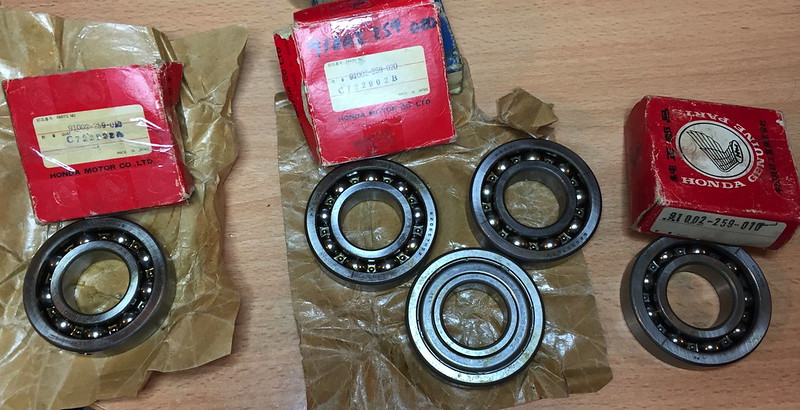
Type A equates to 91002-259-010
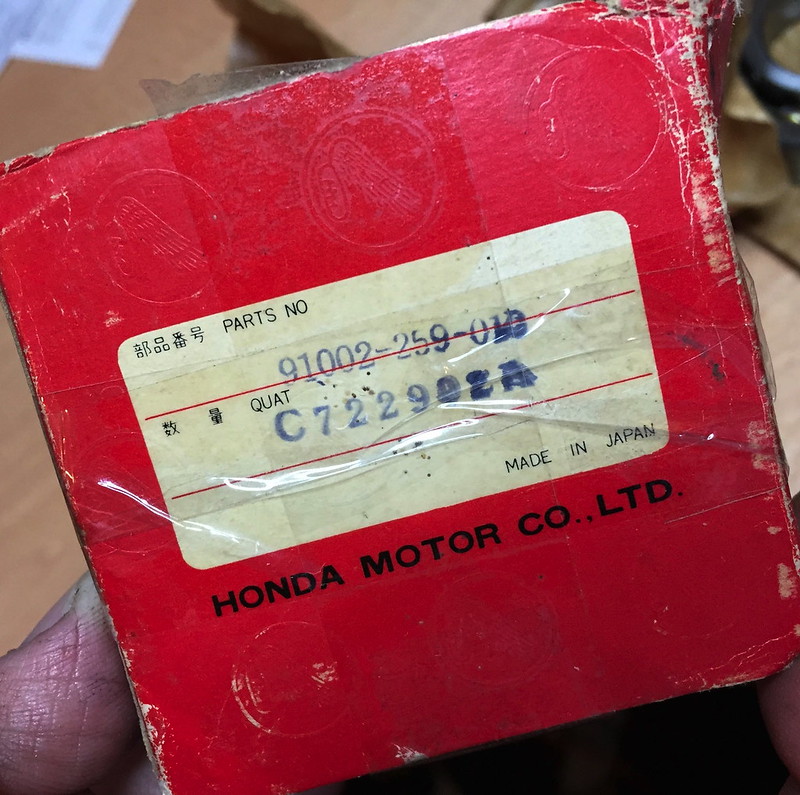
And Type B with the shield equates to 91002-259-020. I'm guessing that this one was the part used to reclaim damaged roller-bearing fitted cranks.
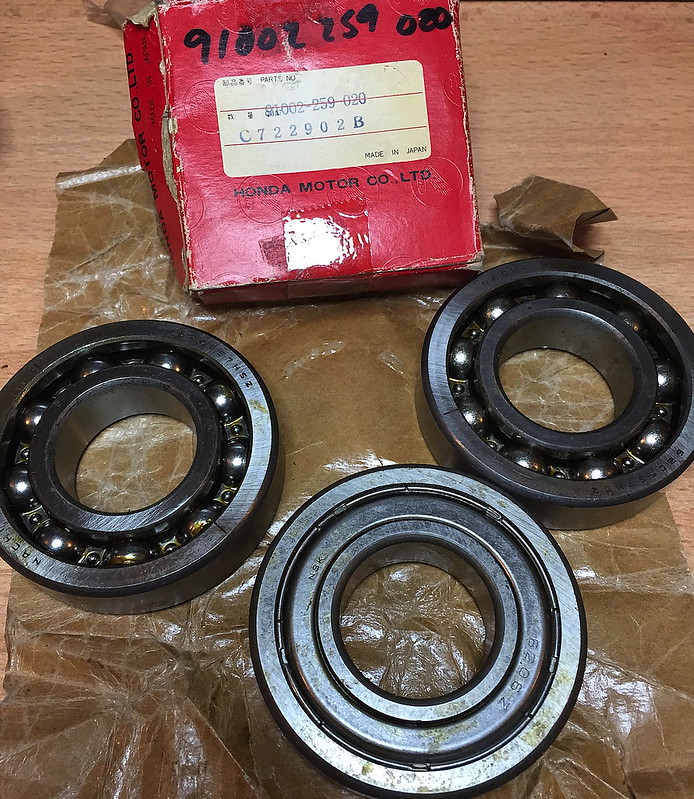
It's interesting to conjecture why Honda designed an oil feed to a bearing with no oil hole but maybe this early supply just wasn't up to feeding a roller bearing. Perhaps they reverted to the roller once they had put in a better oil feed? If that ball bearing (020) was used to reclaim damaged cranks, then fitting it rendered that elaborate oil feed arrangement useless......
G

The oilway into the bearing is just next to the knock pin / dowel in the outer race.

That all sounds sensible but my man told me that early '61 CB72s were fitted with a ball race on that side and that the bearing surface on these early bikes is not hardened. Looking at my crank, it does, indeed, have a ball race. But.... There is no oil feed in that bearing... It just relies on splash feed. You probably wouldn't want an oilway drilled into a ball race anyway but it seems that Honda planned for the later roller bearing and then, temporarily, gave up on the idea.
This is my 'old' crank....

Ande here is a NOS CL72 crank with the ball race fitted...

I dug out some bearings and looked at the early parts books and there appear to be two bearings. Type A which is unshielded and type B with a single shield.

Type A equates to 91002-259-010

And Type B with the shield equates to 91002-259-020. I'm guessing that this one was the part used to reclaim damaged roller-bearing fitted cranks.

It's interesting to conjecture why Honda designed an oil feed to a bearing with no oil hole but maybe this early supply just wasn't up to feeding a roller bearing. Perhaps they reverted to the roller once they had put in a better oil feed? If that ball bearing (020) was used to reclaim damaged cranks, then fitting it rendered that elaborate oil feed arrangement useless......
G
'60 C77 '60 C72 '62 C72 Dream '63 CL72
'61 CB72 '64 CB77 '65 CB160
'66 Matchless 350 '67 CL77
'67 S90 '77 CB400F
'61 CB72 '64 CB77 '65 CB160
'66 Matchless 350 '67 CL77
'67 S90 '77 CB400F
I was curious about Dave's comments about early crank ends being soft and having a radius between journal and crank web rather than an undercut for the ones intended for rollers.
I got hold of a puller and extracted the bearing.
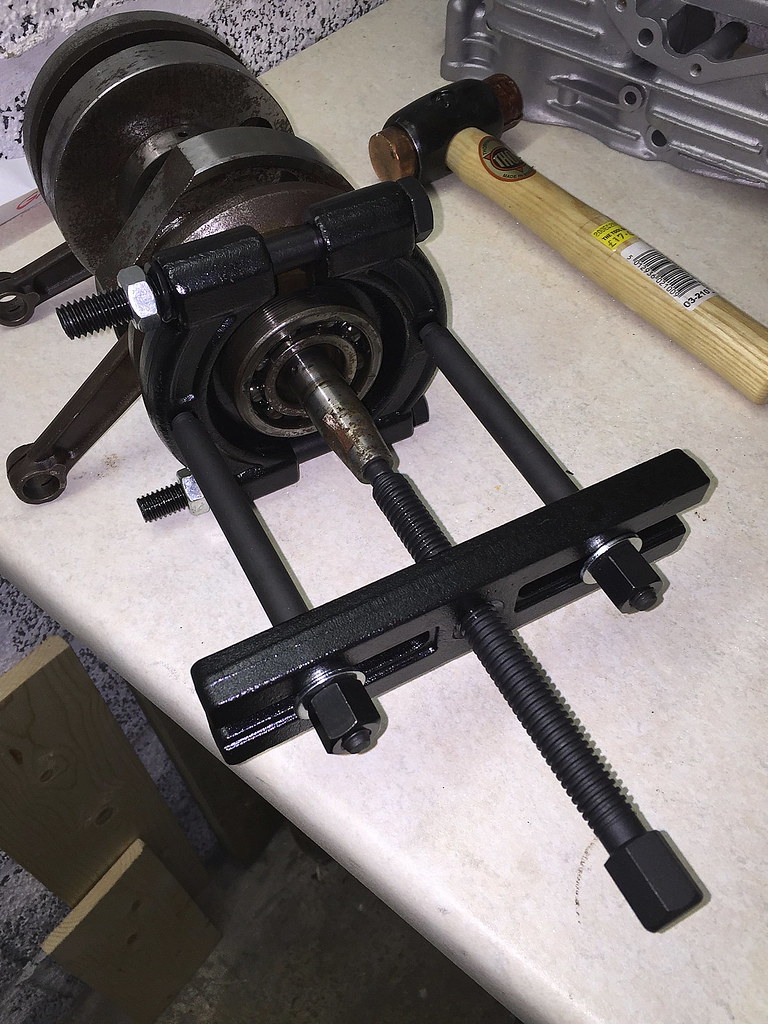
I was a bit surprised when the bearing came off and had a shield on the inside, but here is the crank end with a definite radius.
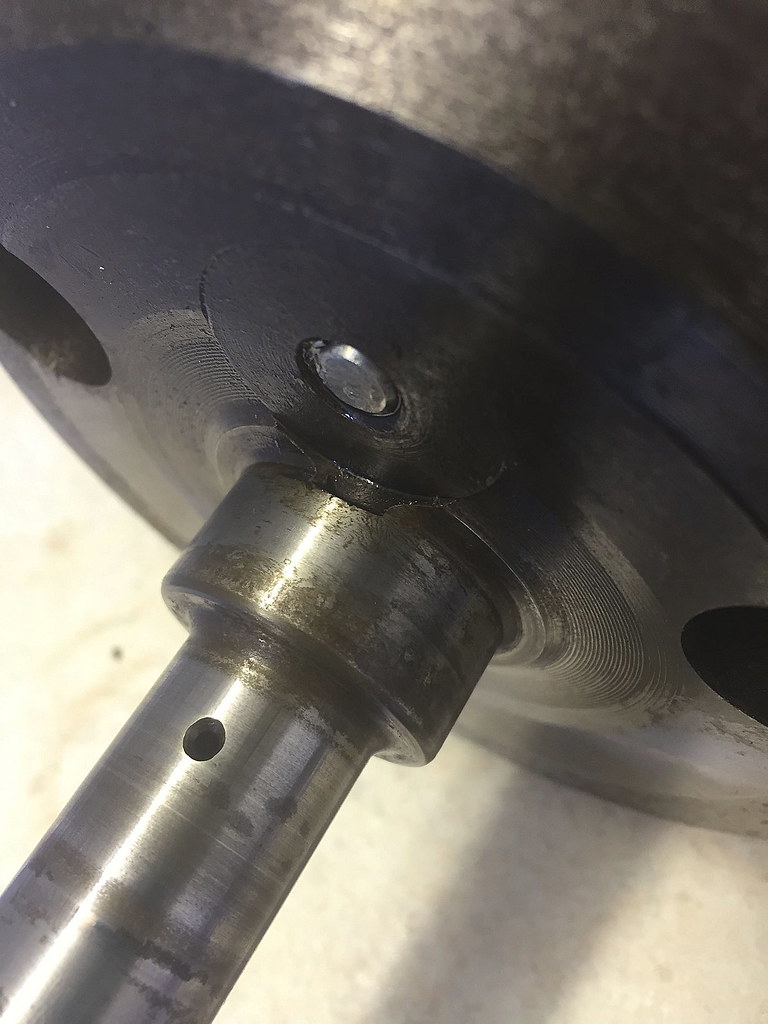
Just to be sure, I pulled the roller bearing off another old crank and here is the undercut...
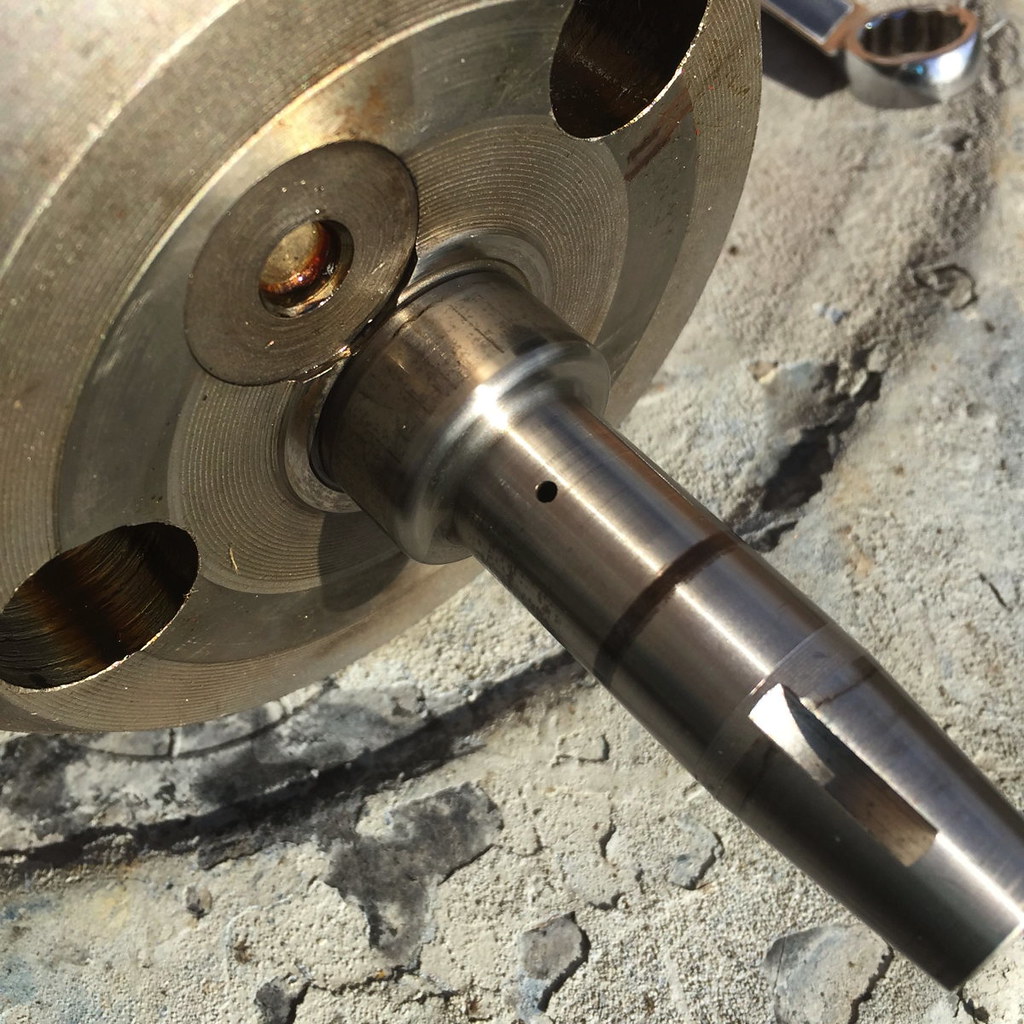
What puzzles me is why, with the "020" shielded bearing would the shield be on the inside where it restricts flow to the bearing. Honda appeared to struggle with these bearings on the early bikes but that change doesn't look like it would help?
I'm sure that Dave, the crank man, will have an opinion.....
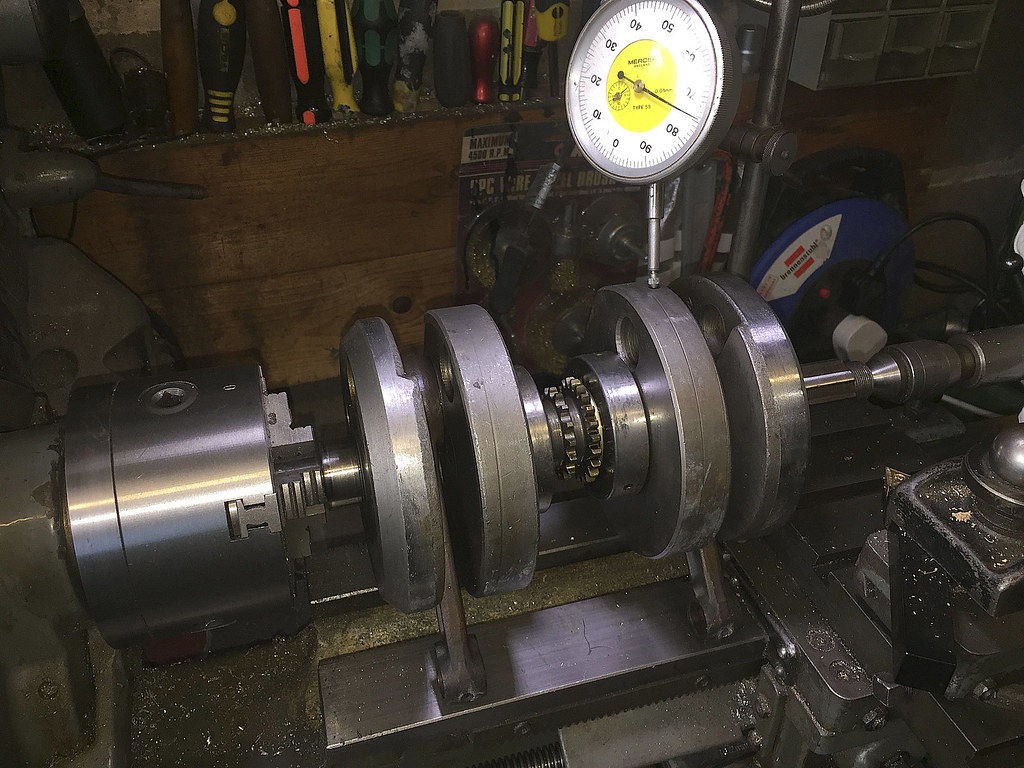
G
I got hold of a puller and extracted the bearing.

I was a bit surprised when the bearing came off and had a shield on the inside, but here is the crank end with a definite radius.

Just to be sure, I pulled the roller bearing off another old crank and here is the undercut...

What puzzles me is why, with the "020" shielded bearing would the shield be on the inside where it restricts flow to the bearing. Honda appeared to struggle with these bearings on the early bikes but that change doesn't look like it would help?
I'm sure that Dave, the crank man, will have an opinion.....

G
'60 C77 '60 C72 '62 C72 Dream '63 CL72
'61 CB72 '64 CB77 '65 CB160
'66 Matchless 350 '67 CL77
'67 S90 '77 CB400F
'61 CB72 '64 CB77 '65 CB160
'66 Matchless 350 '67 CL77
'67 S90 '77 CB400F
-
Tim Miller
- honda305.com Member
- Posts: 242
- Joined: Mon Jan 30, 2012 6:22 pm
- Location: Pflugerville, TX
Crank
G
Good investigation. Now go a little deeper and pull that alloy galley plug out and you'll see why any real engine rebuild should have the crank totally disassembled and cleaned. Run a 5/16" drill bit in that galley and it can look like the sludge filter that's never been cleaned!
Perhaps the 010 bearing was replaced previously.
Keep up the great work!
Tim
Good investigation. Now go a little deeper and pull that alloy galley plug out and you'll see why any real engine rebuild should have the crank totally disassembled and cleaned. Run a 5/16" drill bit in that galley and it can look like the sludge filter that's never been cleaned!
Perhaps the 010 bearing was replaced previously.
Keep up the great work!
Tim



